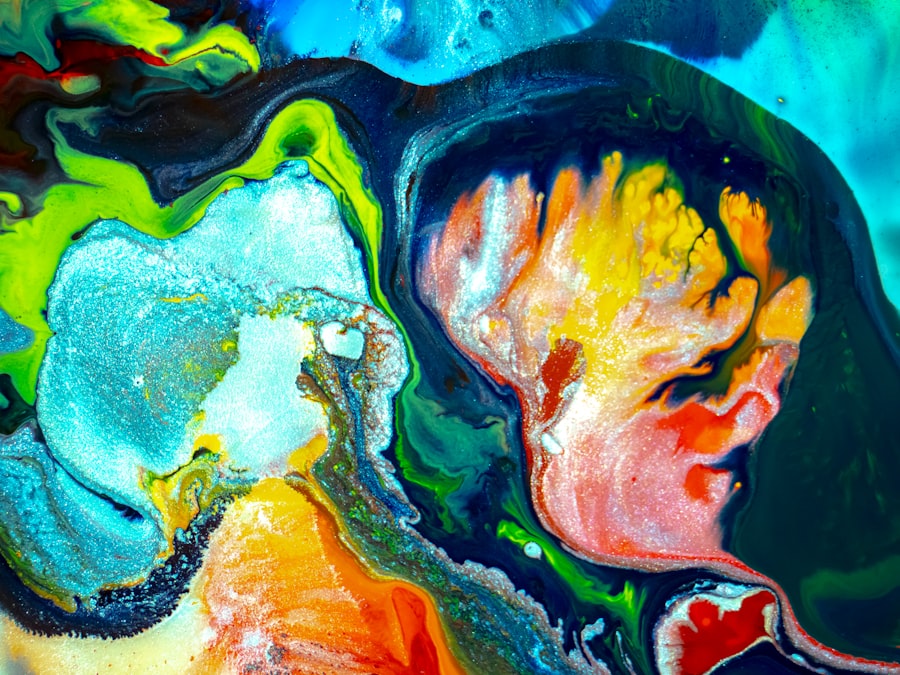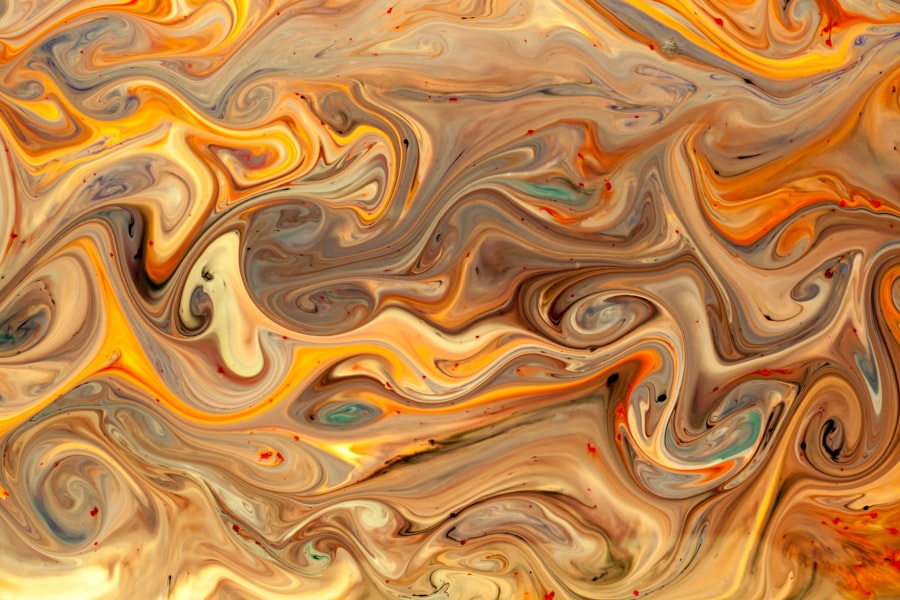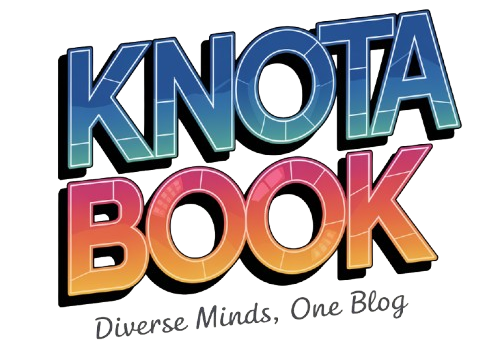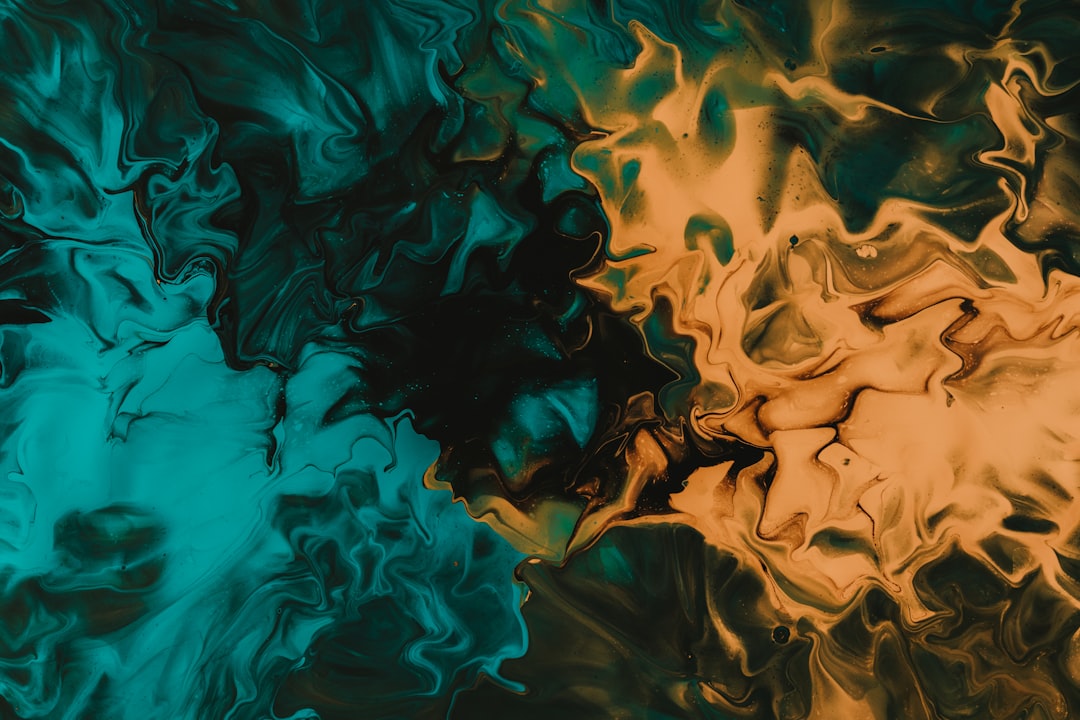Mathias Kauage, a prominent figure in Papua New Guinea’s art scene, is celebrated for his vibrant and evocative works that encapsulate the essence of village life in his homeland. Born in 1944 in the Eastern Highlands, Kauage’s journey as an artist began in a context rich with cultural heritage and traditional practices. His early life was steeped in the customs and stories of his people, which would later serve as a wellspring of inspiration for his artistic endeavors.
Kauage’s work is not merely a reflection of his surroundings; it is a profound commentary on the complexities of modernity and tradition, often juxtaposing the simplicity of village life with the encroaching influences of urbanization. Kauage’s artistic career took off in the 1970s, a period marked by a burgeoning interest in indigenous art forms across the Pacific. His unique style, characterized by bold colors and dynamic forms, quickly garnered attention both locally and internationally.
Kauage’s ability to weave narratives through his art has made him a pivotal figure in promoting Papua New Guinea’s cultural identity on the global stage. His works are not just visual representations; they are stories that resonate with universal themes of community, identity, and the human experience.
Key Takeaways
- Mathias Kauage was a prominent Papua New Guinean artist known for his vibrant and expressive Village Life Artwork Collection.
- The Village Life Artwork Collection depicted scenes from everyday life in Papua New Guinea, showcasing the artist’s deep connection to his cultural heritage.
- Kauage’s work was influenced by traditional Papua New Guinean art, as well as modern influences from his travels and interactions with other artists.
- Kauage utilized a variety of techniques and mediums in his artwork, including linocut prints, paintings, and sculptures, showcasing his versatility as an artist.
- The symbolism and meaning in Kauage’s artwork often reflected themes of community, spirituality, and the interconnectedness of humanity, leaving a lasting impact on the art world and his native Papua New Guinea.
The Village Life Artwork Collection
The Village Life artwork collection is perhaps Kauage’s most significant body of work, encapsulating the daily lives, rituals, and traditions of the people in Papua New Guinea. This collection serves as a visual chronicle of village life, showcasing scenes that range from communal gatherings to agricultural practices. Each piece is imbued with a sense of warmth and familiarity, inviting viewers to engage with the narratives depicted.
In this collection, Kauage employs a variety of characters and motifs that represent different aspects of village life. For instance, he often portrays men and women engaged in traditional activities such as fishing, dancing, and weaving.
These depictions are not mere representations; they are imbued with a sense of pride and connection to heritage. The artworks serve as a reminder of the importance of community and the shared experiences that bind individuals together. Through this collection, Kauage invites viewers to appreciate the beauty and complexity of village life, encouraging a deeper understanding of Papua New Guinea’s cultural landscape.
Influences and Inspiration

Kauage’s artistic vision is deeply rooted in his upbringing and the cultural milieu of Papua New Guinea. Growing up in a village setting, he was surrounded by oral traditions, folklore, and the vibrant customs of his people. These elements have profoundly influenced his work, providing a rich tapestry of stories and symbols that he translates onto canvas.
The oral histories passed down through generations have instilled in him a sense of responsibility to preserve and share these narratives through his art. Moreover, Kauage’s exposure to Western art movements has also played a role in shaping his style. While he remains grounded in his cultural heritage, he has embraced certain techniques and concepts from modern art that allow him to express his ideas more dynamically.
This fusion of traditional and contemporary influences is evident in his use of color, form, and composition. By blending these diverse influences, Kauage creates a unique artistic language that speaks to both local and global audiences, bridging cultural divides while celebrating his roots.
Techniques and Mediums
| Technique/Medium | Description | Examples |
|---|---|---|
| Oil Painting | A painting technique using pigments mixed with a binder of oil. | Van Gogh’s “Starry Night” |
| Watercolor | A painting method using pigments suspended in a water-based solution. | Winslow Homer’s “The Gulf Stream” |
| Sculpture | The art of making two- or three-dimensional representative or abstract forms. | Michelangelo’s “David” |
| Printmaking | The process of creating artworks by printing, normally on paper. | Albrecht Dürer’s “Melencolia I” |
Mathias Kauage employs a variety of techniques and mediums in his artwork, showcasing his versatility as an artist. Primarily known for his paintings, he often utilizes acrylics on canvas, which allow for vibrant color application and quick drying times. This medium enables him to layer colors effectively, creating depth and texture that enhance the visual impact of his pieces.
His brushwork is characterized by bold strokes that convey movement and energy, reflecting the dynamic nature of village life. In addition to painting, Kauage has explored other mediums such as printmaking and sculpture. His foray into printmaking has allowed him to experiment with different textures and patterns, further enriching his artistic repertoire.
Sculptural works often incorporate natural materials like wood or stone, connecting his art to the land itself. This exploration of various techniques not only showcases his creativity but also reflects his desire to push boundaries and engage with different forms of expression.
Symbolism and Meaning
The symbolism embedded in Kauage’s artwork is profound and multifaceted. Each piece often contains layers of meaning that reflect the values, beliefs, and experiences of Papua New Guinea’s diverse cultures. For instance, traditional motifs such as masks or totems may appear in his work, representing ancestral spirits or cultural heritage.
These symbols serve as conduits for storytelling, allowing viewers to connect with the deeper narratives woven into each piece. Moreover, Kauage frequently addresses themes such as community cohesion, environmental stewardship, and the tension between tradition and modernity. His portrayal of communal activities emphasizes the importance of social bonds and collective identity within village life.
Conversely, elements that hint at urbanization or change may evoke feelings of nostalgia or concern for the future.
Impact and Legacy

Mathias Kauage’s impact on the art world extends far beyond his individual works; he has played a crucial role in elevating Papua New Guinea’s artistic presence on the global stage. By showcasing the richness of his culture through art, he has inspired a new generation of artists to explore their own identities and narratives. His commitment to preserving traditional stories while embracing contemporary techniques has paved the way for innovative expressions within indigenous art forms.
Kauage’s legacy is also evident in the numerous exhibitions and collections that feature his work around the world. Institutions such as the National Gallery of Australia have recognized his contributions by including his pieces in their permanent collections. This recognition not only honors Kauage’s talent but also serves to educate audiences about Papua New Guinea’s cultural heritage.
His influence can be seen in various art initiatives aimed at promoting indigenous voices, ensuring that future generations continue to engage with their cultural narratives through creative expression.
Reception and Recognition
The reception of Mathias Kauage’s work has been overwhelmingly positive, both within Papua New Guinea and internationally. Critics have lauded his ability to blend traditional themes with contemporary artistic practices, resulting in works that resonate with diverse audiences. Art critics often highlight the emotional depth present in his pieces, noting how they evoke feelings of nostalgia while simultaneously addressing contemporary issues faced by indigenous communities.
Kauage has received numerous accolades throughout his career, further solidifying his status as a leading figure in Pacific art. His participation in prestigious exhibitions has garnered attention from collectors and institutions alike, leading to increased visibility for Papua New Guinea’s artistic heritage. The recognition he has received serves not only as validation for his work but also as an important step toward greater appreciation for indigenous artists on a global scale.
The Future of Kauage’s Village Life Artwork
As Mathias Kauage continues to create, the future of his Village Life artwork remains bright and promising. His ongoing exploration of themes related to community and identity suggests that he will continue to produce works that resonate deeply with both local audiences and international viewers. The evolution of his style may also reflect changes within Papua New Guinea itself—an ever-shifting landscape where tradition meets modernity.
Moreover, Kauage’s commitment to mentoring young artists ensures that his legacy will endure beyond his own creations. By sharing his knowledge and experiences with emerging talents, he fosters an environment where new voices can emerge while honoring their cultural roots. This generational exchange is vital for the continued growth of Papua New Guinea’s art scene, ensuring that it remains vibrant and relevant in an increasingly interconnected world.
In conclusion, Mathias Kauage stands as a testament to the power of art as a vehicle for cultural expression and storytelling. His Village Life artwork collection not only captures the essence of Papua New Guinea’s rich traditions but also serves as a bridge between past and present—a reminder of the importance of community amidst the complexities of modern life. As he continues to create and inspire future generations, Kauage’s contributions will undoubtedly leave an indelible mark on the world of art.
FAQs
What is Mathias Kauage known for?
Mathias Kauage was a prominent Papua New Guinean artist known for his vibrant and colorful artwork depicting village life and traditional customs.
What is village life artwork?
Village life artwork refers to art that depicts the daily life, customs, and traditions of rural or village communities. This type of artwork often showcases scenes of everyday activities, cultural ceremonies, and interactions within the village setting.
What themes did Mathias Kauage’s artwork often explore?
Mathias Kauage’s artwork often explored themes of community, family, spirituality, and the interconnectedness of village life. His vibrant and expressive paintings captured the essence of Papua New Guinean culture and traditions.
Where can Mathias Kauage’s village life artwork be found?
Mathias Kauage’s village life artwork can be found in various art galleries, museums, and private collections around the world. His work has been exhibited internationally and has gained recognition for its unique portrayal of Papua New Guinean village life.
How did Mathias Kauage’s village life artwork impact the art world?
Mathias Kauage’s village life artwork contributed to the global appreciation and understanding of Papua New Guinean art and culture. His distinctive style and subject matter brought attention to the rich traditions and way of life in rural Papua New Guinea.

